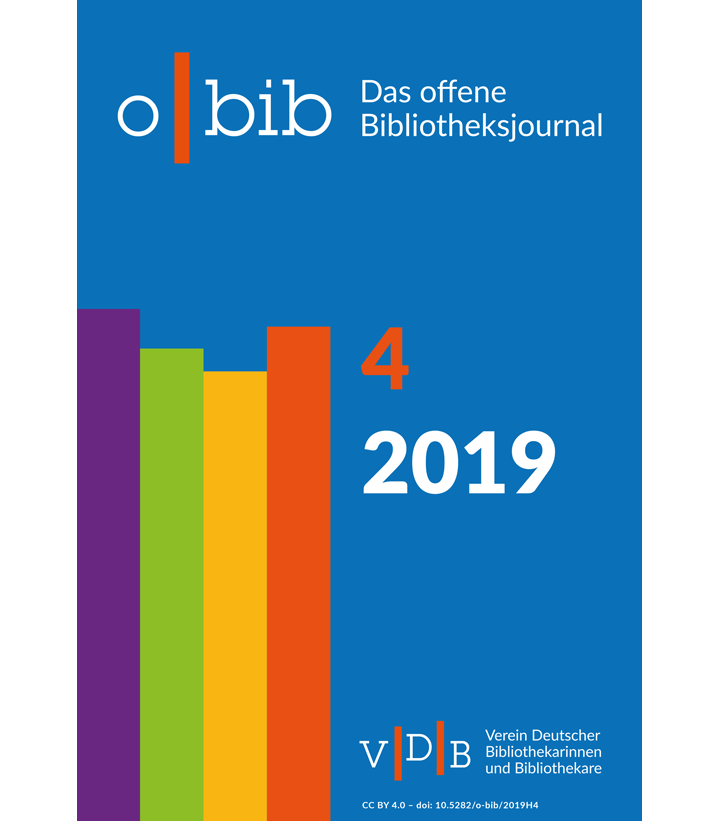The project "GND for cultural data" (GND4C)
DOI:
https://doi.org/10.5282/o-bib/2019H4S59-97Keywords:
GND4C, authority fileAbstract
The growing online presence of museums, archives, research and other cultural heritage institutions requires efficient ways to semantically interlink the collection assets of our cultural treasures. One precondition for interlinking datasets is the shared use of authority files and controlled vocabularies. The Integrated Authority File (GND), managed by the German National Library, is a widely recognized vocabulary for description and information retrieval in library communities. Published as linked open data, the GND fosters semantic interoperability and reuse of data. Objects kept in different collections can be retrieved together, and crossdisciplinary research is facilitated. However, in order to open the GND for interdisciplinary and crossdomain use, it needs to be adapted and actively shared among the communities. In four parts of this article, members of the publicly funded project “GND for cultural data” (GND4C) give an insight into the state of the work, focusing on the question if, and to what extent the GND must adapt to the new requirements.
The first part of this article outlines the objectives and approaches of the project according to its four focal points: the organizational structure of the GND network, the data model and rule set for the GND, the technical infrastructure as well as the requirements for community-building and communication beyond the library community. The second part describes the conditions and requirements for incorporating authority data for persons and concepts into the GND, as far as they are not predefined by the cataloging needs of libraries. The third part of this article looks at the expressiveness of the existing data model and rule set with regard to the cataloging of historic geographical entities as well as buildings and other humanmade structures. Being immovable, buildings share properties with natural geographical entities. As artificial objects, they have properties in common with humanmade works of any kind. Representing this dual nature of locationbound objects is one of the challenges for modelling. In the last part the authors outline why there is little need for conceptual changes to the basic GND data model. However, they identify specific properties pertinent to museum and archival objects which are not yet covered by the current model. These additional demands are met by specifying CORE and PLUS rules. The COREPLUS model distinguishes between minimum rules to define an authority entity in the CORE model, and additional rules in the particular communityspecific PLUS rule set. The conclusion gives an overview of the issues still to be resolved in the second half of the GND4Cproject.
Downloads
Published
Issue
Section
License
Copyright (c) 2019 Martha Rosenkötter, Jürgen Kett, Mathias Manecke, Jens M. Lill, Detlev Balzer, Barbara K. Fischer, Susanne Laux, Jutta Lindenthal, Axel Vitzthum

This work is licensed under a Creative Commons Attribution 4.0 International License.





